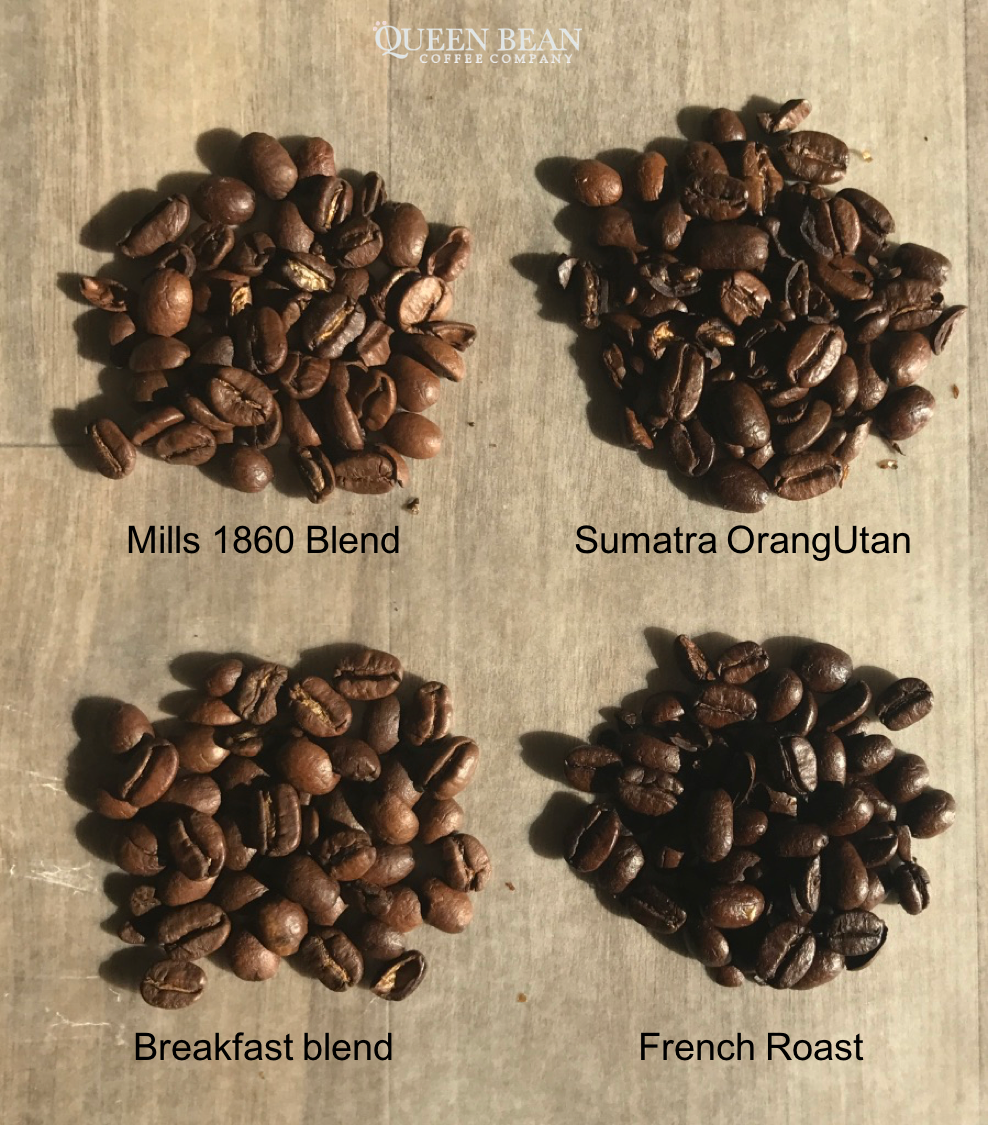When I hear people say “I only like dark roasts”, I want to sit them down and explain how differences in bean aspects, roast, and origin collectively create a coffee’s profile. In my experience, once equipped with this knowledge, palates expand and a world of new choices opens to the coffee drinker.
Before delving into the roast differences, it is important that tasters (and if you are drinking a fine cup of coffee, you are a taster) are able to distinguish between the different aspects present in a single roasted bean:
- Acidity level refers to the bean’s acid content. High acidity coffees, such as a brilliant Ethiopian Yirgacheffe, are often described as vibrant, light, and citric. Whereas low acidity coffees, like Sumatrans and Indonesians, are often referred to as smooth, bitter, and velvety on the tongue.
- Bean type refers to the bean’s classification, the two primary being robusta and arabica. While a bean’s type has numerous impacts on taste, for this blog, we are focusing only on the caffeine content. At Mills/ QB, we only use shade grown, high-grown arabicas which are smoother and have less caffeine than robustas.
- Mouthfeel describes the weight of the coffee in your mouth and on your tongue – some coffees feel thicker and heavier while others are light and fleeting.
- Taste refers to the beans’ natural flavors. Each variety of bean is highly nuanced with base notes, upper tones, and closing notes. When describing a coffee’s flavor, we often begin by naming dominant base and upper notes. Every coffee is significantly impacted by the roast color with different notes dominating at different phases within the roast spectrum. Some beans, such as Brazils, are mild and mutable allowing them to be roasted to almost any shade while others, such as a Peru or Sumatra, have highly dominant base notes that seem to shine when roasted dark. When you have a naturally high acid coffee, it can be easy to confuse the crisp brightness produced by the acidity for a critic flavor. The easiest way to distinguish between the two is to determine if that bright, tangy feeling stays on your tongue for any length of time. If it does, you are tasting a citric flavor; if it does not, you are feeling the acidity.
- Roast refers to the roast shade, determined by roasting time. There are three basic roast shades, determined by the number of times the beans “crack” during the roasting process. The first crack brings us to light roast, the second to medium or full city roast, and the third to dark roast. Within each roast, there are numerous gradations.
LIGHT ROASTS have high acidity and tend to be light and tangy on the tongue. Light roasts also best preserve the beans’ natural complexity and taste components, making them the preferred roast of professional cuppers. Light roasts are easily identifiable by their light brown shade and oil-free beans (oil secretion is an aspect of prolonged roasting). Assuming the beans natural caffeine content is the same, light roasts contain more caffeine than any other roast as caffeine is burned off during the roasting process. This means that light roasts generally have more caffeine than dark roasts.
MEDIUM ROASTS have moderate to high acidity and moderate to heavy mouthfeel without being very dense. Medium roasts preserve the beans’ natural dominant flavors. That said, additional roasting may cause the taste of the roast to mask the beans’ subtle, delicate overtones. Medium roast beans stopped right after the second crack are just slightly darker than light roasts and still oil-free. Beans labeled full city (the darker end of the medium scale) are darker brown and may begin to show a oily sheen.

- Vienna roast, the lightest dark roast. Beans are roasted to dark brown with a faint oil sheen.
- French roast, a medium dark roast. Beans are roasted until nearly black and secreting a fine oil coating.
- Italian roast, the darkest dark roast. Beans are roasted until nearly black with a rich oil coating.
The bottom line is, your palate is broader than you think! Rather than focusing on your go-to roast, try zoning in on the your preferred coffee components (taste / flavor, mouthfeel, acidity, etc.). It’s a tireless exercise that will keep your tongue in check and allow you to explore the beauty of all well roasted coffees. At Mills / QB each “roast” is tested repeatedly to determine optimal shade for each bean or blend. Here’s a recommended start — if you are ready to start, we suggest ordering a sampler:
-
- Light roast: Breakfast Blend
-
- Medium roast: Mills Blend, Cafe La Reina
- Dark roast: Seattle Express
-
- Vienna roast: Colombian Campesina, Peru Dark
-
- French roast: French Roast, Sumatra Mandheling
- Italian roast: Midnight Rebel (between a French and an Italian roast), Italian Roast
-
